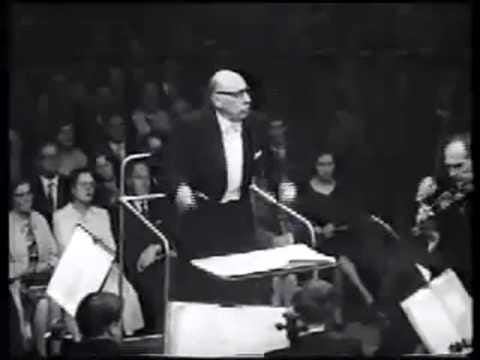I’ve had an obsession with Stravinsky's Rite of Spring since my teens, when I listened to it almost non-stop for about a year. And even though it’s some time since I conducted it, it resurfaces from time to time and I start pondering once more its many mysteries.
For a knowledgeable history of the piece, here’s George Benjamin’s take on it, written for the centenary of its composition ten years ago.
That, of course, is a composer’s view. But what of the conductor’s? Well, this is what Stravinsky had to say:
“Its reputed difficulties…actually no more than the simple alternation of twos and threes, proved to be a conductors’ myth. Spring is strenuous but not difficult, and the chef d’orchestre is hardly more than a mechanical agent, a time-beater who fires a pistol at the beginning of each section but lets the music run by itself.” (from Memories & Commentaries by Igor Stravinsky and Robert Craft).
Hmmm.
Michael Colgrass, who played the piece under Stravinsky’s baton, had a different story (admittedly Stravinsky was a lot older when this recording was made, and one should always take orchestral players’ reminiscences with a pinch of salt, but…)
Here’s some video of Stravinsky conducting The Firebird so you can make up your own mind about Igor’s waggling credentials:
So. Is conducting The Rite of Spring hard? Is a piece of string long?
That’s a strangely non-committal answer, I know. Stravinsky does, I think, have a point – a lot of the ‘difficulty’ is in the complexity of the cross-rhythms, and the fear of the consequences of derailment - so if you’re the kind of conductor who can do that, then it’s no more difficult than a knotty quadratic equation, and certainly no more complicated than a lot of pieces written since. And the complete lack of rubato lends credence to his assertion that you’re little more than a time-beater. But the sheer size of the orchestra, with the weight of sound that brings, can make the whole thing a cumbersome experience, like negotiating a slalom course in a juggernaut. You do need to be on the ball.
But that’s true of any piece.
What’s probably hardest of all, given the ubiquity of the piece nowadays, is to inject the necessary ‘thrill factor’, to try and make playing and listening to it as close to the visceral, gut-wrenching experience it would have been when it was first written, but without resorting to lunatic extremes of tempo.
For the orchestra? Well, yeah, it’s still pretty hard – if they can play it, you can conduct it, as long as you don’t get in the way.
Incidentally, “As long as you don't get in the way” is (a) true of most conducting and (b) not as easy as you think.
Here’s an oddity, first encountered over a decade ago and mysteriously reappearing in my YouTube sidebar earlier today. It’s a simple concept: take 37 different versions of the eight bars that herald the beginning of ‘The Augurs of Spring’ section of The Rite of Spring and line them up, one after the other. The result (six minutes of it) is a sort of minimalist cheese dream – wrong as it is in many ways, it’s also hypnotic and intriguing.
The differences between the 37 versions – speed, resonance, timbre, balance and even occasionally pitch – raise all sorts of questions about interpretation, our pre-conceived ideas of what a piece of music is, what it sounds like, and how a single performance can shape our impression of it. I could, at this point, get quite lofty about the responsibility of the performer to the music they play, but you’re busy people and I’m sure you can fill in the gaps yourselves.
Further watching, for Rite of Spring fans:
Stravinsky talking about it:
Breaking the silence - a bassoonist speaks:
The internet is a strange place:
And here, by way of cleansing, is a performance of the whole thing:
Do feel free to share your Rite of Spring experiences below. Do you love it? Hate it? Never heard it? Who is this Stravinsky bloke anyway?




I too have lloved it since my teens, although I've not listened to it for some time, so thank you for the prompt. Even snippets are exciting to hear, still.
A decade or so ago I worked in a gift shop and The Rite of Spring was one of the 20 or so classical CDs we had to choose from as our shop soundtrack. Its changes in pace and volume; its whole structure, in fact, make it completely unsuitable as gentle plinky background music to browse to - so naturally it was my CD of choice.
The 37 versions are fascinating, even to a non-musician like me. Particularly like the player piano roll that tops & tails the piece